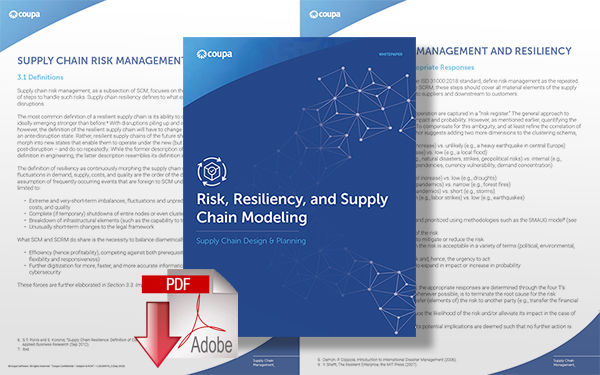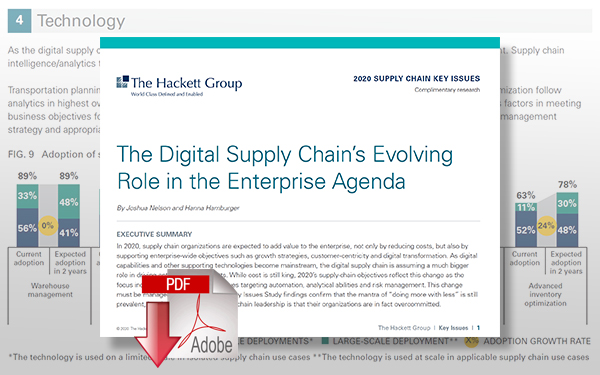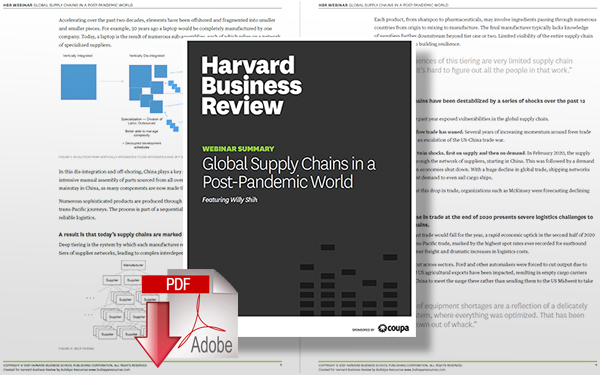Inventory Optimization Why It Matters for Your Supply Chain

When done correctly, inventory optimization is powered by some of the latest emerging technologies, including machine learning, data analytics, artificial intelligence, and cloud computing, and by using proven inventory management processes, supply chain design and planning helps with inventory optimization.
Inventory Optimization More Essential Than Ever
Inventory optimization is more essential than ever - even as managing inventory is at a crossroads.
On the one hand, customers expect the products they want to be available at the moment of need.
On the other hand, supply chain disruptions have become commonplace across all sectors, worsened by the ongoing COVID-19 pandemic and causing delays due to supply constraints.
With far-reaching uncertainty, implementing inventory strategies has become a critical element (if not the most critical element) of your overall supply chain strategy.
What is Inventory Optimization
Inventory optimization is the practice of having the right amount of inventory available to meet demand, both in the present and what’s expected in the future.
Reaching an optimal level of inventory lets you not only address demand expectations, but also reduce the costs of common inventory issues such as backorders, overstocking, and stockouts.
Businesses obviously want to avoid the costs associated with lost sales, manufacturing delays, lower revenue, and the loss of important customers. But the challenges for many companies are multifold. For one, many players in their supply chain are also grappling with supply chain issues of their own.
They may be holding inventory in the form of safety stock to avoid stockouts, for example, or be unable to stock quickly enough. In fact, according to Gartner, 54% of organizations are investing in improving the availability of safety stock over the next two years.(1) However, when working from imperfect information, companies can make errors that lead to consequences upstream or downstream.
The other issue is uncertainty, and not just that brought on by the pandemic. There’s unpredictability in some international markets, brought on by instability in those regions and ongoing trade disputes with the United States.
The good news is that the spike in the inventory-to-sales ratios in 2020, which reached a high of 1.7+ mid-year, has come back to earth. U.S. Census Bureau data showed that July 2021 ratios were at 1.25, down from 1.36 a year earlier.(2)
The Components of Inventory Optimization
When done correctly, inventory optimization is powered by some of the latest emerging technologies, including machine learning, data analytics, artificial intelligence, and cloud computing. Using proven inventory management processes, supply chain design and planning helps with inventory optimization.
Here is a closer look at those core components of industry optimization:
- Holistic Supply Chain Design: Modeling cycle stock, safety stock, WIP, prebuild, and in-transit inventories to understand the entire inventory picture
- Multi-Echelon Inventory Optimization: Identifying opportunities for system-wide safety stock reduction by optimizing across all echelons
- Service-Level Optimization: Determining optimal service level mix to minimize cost, maximize profit, and/or meet inventory budget
- Inventory Simulation: Testing performance of recommended inventory policies using simulation to understand operational feasibility
- Scenario Analysis: Enabling planners to fine-tune inventory targets and quickly be able to run what-if scenarios to understand key inventory drivers
The Advantages to Inventory Optimization
Optimizing inventory levels has distinct advantages for your organization, and can provide:
- Visibility: Gaining a real-time view of your inventory lets you know what you have and where it is in production and shipping. It can also provide information on sources, components or ingredients, and customers; plus, your demand forecasting lets you see how sales are increasing for new products, adjust for seasonal variances, determine end-of-line plans for products with declining sales, and the pace at which products are selling.
- Inventory Cost Reduction: With fewer costs for warehousing, storage, and excess inventory maintenance, you can reduce overhead and operating holding costs.
- Collaboration: Clarity about inventory levels allows your company to be more collaborative with supply chain partners upstream and downstream, and stakeholders. It also allows staff to understand best home inventory affects elements of your organization - from sales and marketing to customer demand, to accounts receivable to human resources.
- Better Delivery Times: A clearer understanding of inventory lets you allocate products to warehouse locations to reduce the time for deliveries, improve customer satisfaction and lower delivery costs, as well as increase sales/revenue improvements due to the availability of inventory.
Inventory Optimization Solution
By using the right technologies to optimize inventory, your organization will see positive results throughout the business.
At Coupa, we use integrated technologies that give you actionable, accurate, and real-time inventory optimization solutions. By accessing, organizing, and using data from across your organization and your supply chain, Coupa solutions reduce disruptions, optimize space, and improve customer experiences. To move beyond traditional planning technologies to keep pace with disruption, and learn more about Coupa’s inventory optimization solutions, download our continuous design eBook.
Sources:
1 ”Supply Chain Executive Report: Future of Supply Chain - Crisis Shapes the Profession,” Gartner, 30 Dec 2020.
2 ”Manufacturing and Trade Inventories and Sales, October 2021,” U.S. Census Bureau, 15 Dec 2021.
Related Resources
Continuous Design Outsmarts Disruption: A Blueprint for Supply Chain Resiliency
In this ebook, we discuss how continuous design can reduce risk, improve resilience, and turn supply chain challenges into a competitive advantage. Download Now!
Risk, Resiliency, and Supply Chain Modeling
This paper first examines why existing supply chain management practices do not naturally develop resilient supply chains and why some of the existing supply chain processes are not suitable for addressing such risks and required responses. Download Now!
Digital Supply Chain’s Evolving Role in the Enterprise Agenda
The Hackett Group 2020 Key Issues Study findings confirm that the mantra of “doing more with less” is still prevalent, but the top concern of supply chain leadership is that their organizations are in fact overcommitted, AI analytics to enable a more agile supply chain. Download Now!
Global Supply Chains in a Post-Pandemic World
In this webinar summary, Willy Shih, Robert, and Jane Cizik Professor of Management Practice in Business Administration at Harvard Business School, shares insights into how global supply chains came to be the way they are and how their vulnerability has been revealed through numerous crises. Download Now!
More Resources from Coupa
Related Article: Supporting Supply Chain Resiliency by Embracing the Principles of Continuous Design
Article Topics
Coupa News & Resources
How Microsoft Improved ESG & Sustainable Spending Working Together with Community.ai Capabilities Supply Chain Agility in an Ever-Changing World How Sourcing Can Respond in Dynamic Markets to Drive Supply Chain Value Build Resilience in Supply Chains by Modeling & Designing Multiple Demand Futures Beyond Disruptions: Building the Next Generation of Resilient Supply Chains 6 Truths About Business Spend Management Technology 5 Ways Supply Chains Can Flourish in an Inflationary World More CoupaLatest in Supply Chain
Ask an Expert: How Shippers Can Prep for Hurricane Season Apple Accused of Multiple Human Rights Violations South Korea Finally Overtakes China in Goods Exported to U.S. UPS Struggles in First Quarter With Steep Earnings Decline How Supply Chains Are Solving Severe Workplace Shortages SAP Unveils New AI-Driven Supply Chain Innovations How Much Extra Will Consumers Pay for Sustainable Packaging? More Supply Chain


















